Osho Introduction
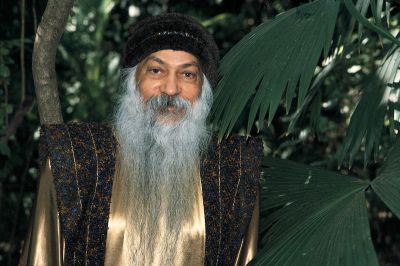 Teachings Teachings
Osho's thought was
rooted in Hindu advaita, which considers all reality as being of a single divine
essence. In this mystical ontology, the human experiences of separateness,
duality and temporality are understood to be illusions produced by the mind. The
dualistic and transient phenomena of the world are the dance, the external play,
of cosmic consciousness. In this dance, every thing, every happening is sacred,
has absolute worth, and is an end in itself.
Ego: man as a
machine
Osho's view of man
as a machine, condemned to the helpless acting out of unconscious, neurotic
patterns, reflects the thought of Gurdjieff and Freud. His vision of the "new
man" who transcends the constraints of convention is reminiscent of Nietzsche's
Beyond Good and Evil. His views on sexual liberation bear comparison to the
thought of D. H. Lawrence. And while his contemporary Krishnamurti did not
approve of Osho, there are clear similarities between their respective
teachings.
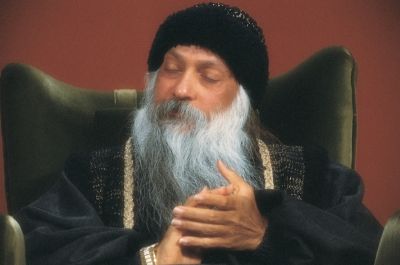 Osho taught that
every human being is a potential Buddha, with the capacity for enlightenment.
According to him, everyone capable of experiencing unconditional love and of
responding rather than reacting to life: "You are truth. You are love. You are
bliss. You are freedom." He suggested that it is possible to experience innate
divinity and to be conscious of "who we really are", even though our egos
usually prevent us from enjoying this experience: "When the ego is gone, the
whole individuality arises in its crystal purity." The ego, in Osho's view,
represents the social conditioning and constraints a person has accumulated
since birth, creating false needs that are in conflict with the real self. "The
whole of religion is nothing but that: dropping the ego, disappearing as your
own master ... Then life becomes such a grace; because all tension arises out of
ego ... all anxiety, anguish, despair, frustration. All illness of the mind is
because we have taken this wrong attitude ... Dissolve yourself as a separate
entity. Become part of the cosmic whole." The problem, he said, is how to bypass
the ego so that our innate being can flower; how to move from the periphery to
the centre. Osho taught that
every human being is a potential Buddha, with the capacity for enlightenment.
According to him, everyone capable of experiencing unconditional love and of
responding rather than reacting to life: "You are truth. You are love. You are
bliss. You are freedom." He suggested that it is possible to experience innate
divinity and to be conscious of "who we really are", even though our egos
usually prevent us from enjoying this experience: "When the ego is gone, the
whole individuality arises in its crystal purity." The ego, in Osho's view,
represents the social conditioning and constraints a person has accumulated
since birth, creating false needs that are in conflict with the real self. "The
whole of religion is nothing but that: dropping the ego, disappearing as your
own master ... Then life becomes such a grace; because all tension arises out of
ego ... all anxiety, anguish, despair, frustration. All illness of the mind is
because we have taken this wrong attitude ... Dissolve yourself as a separate
entity. Become part of the cosmic whole." The problem, he said, is how to bypass
the ego so that our innate being can flower; how to move from the periphery to
the centre.
Meditation
According to Osho,
meditation is not just a practice, but a state of awareness that can be
maintained in every moment. It is this total awareness that awakens the
individual from sleep, and from mechanical responses to stimuli, conditioned by
beliefs and expectations
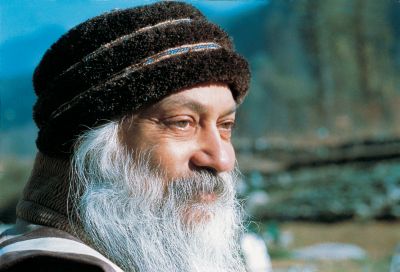 Osho's presence
as a master Osho's presence
as a master
Another key
ingredient of his teaching is his own presence as a master. The initiation he
offered his followers was another such device: "... if your being can
communicate with me, it becomes a communion. ... It is the highest form of
communication possible: a transmission without words. Our beings merge. This is
possible only if you become a disciple”.
Renunciation and
the "New Man"
Osho hoped to
create "a new man" combining the spirituality of Gautama Buddha with the zest
for life embodied by Zorba the Greek in the novel by Nikos Kazantzakis: "He
should be as accurate and objective as a scientist ... as sensitive, as full of
heart, as a poet ... [and as] rooted deep down in his being as the mystic." This
new man, "Zorba the Buddha", should reject neither science nor spirituality, but
embrace them both. He should be "all for matter, and all for spirit
Osho's "Ten
Commandments"
In his early days
as Acharya Rajneesh, a correspondent once asked Osho for his "Ten Commandments".
In his letter of reply, Osho noted that it was a difficult matter, because he
was against any kind of commandment, but "just for fun" agreed to set out the
following:
“
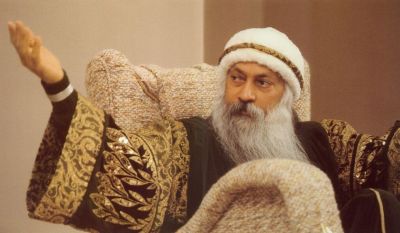
-
Never obey
anyone's command unless it is coming from within you also.
-
There is no
God other than life itself.
-
Truth is
within you, do not search for it elsewhere.
-
Love is
prayer.
-
To become a
nothingness is the door to truth. Nothingness itself is the means, the goal
and attainment.
-
Life is now
and here.
-
Live
wakefully.
-
Do not swim
– float.
-
Die each
moment so that you can be new each moment.
-
Do not search. That which is, is. Stop and see. ”
Reception
"If you really want
to know who I am, you have to be as absolutely empty as I am. Then two mirrors
will be facing each other, and only emptiness will be mirrored. Infinite
emptiness will be mirrored: two mirrors facing each other. But if you have some
idea, then you will see your own idea in me." – Osho
Appraisal as a
thinker and speaker
Khushwant Singh,
eminent author, historian and former editor of the Times of India, has described
him as "the most original thinker that India has produced: the most erudite, the
most clearheaded and the most innovative". In his view, Osho was a
"free-thinking agnostic" who had the ability to explain the most abstract
concepts in simple language, illustrated with witty anecdotes, who mocked gods,
prophets, scriptures and religious practices and gave a totally new dimension to
religion.
Charisma
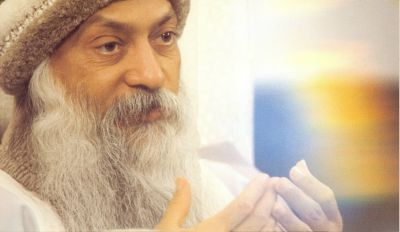 A number of
commentators have remarked upon Osho's charisma. Comparing Osho with Gurdjieff,
Anthony Storr wrote that Osho was "personally extremely impressive", noting that
"many of those who visited him for the first time felt that their most intimate
feelings were instantly understood, that they were accepted and unequivocally
welcomed rather than judged". [Osho] seemed to radiate energy and to awaken
hidden possibilities in those who came into contact with him A number of
commentators have remarked upon Osho's charisma. Comparing Osho with Gurdjieff,
Anthony Storr wrote that Osho was "personally extremely impressive", noting that
"many of those who visited him for the first time felt that their most intimate
feelings were instantly understood, that they were accepted and unequivocally
welcomed rather than judged". [Osho] seemed to radiate energy and to awaken
hidden possibilities in those who came into contact with him
Source:
http://en.wikipedia.org/wiki/Osho
This is a long article about Osho and
I made a selection in tune with the rest of this website.
|